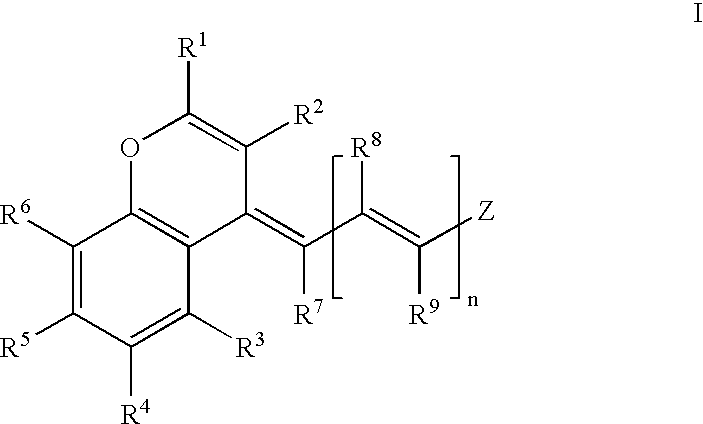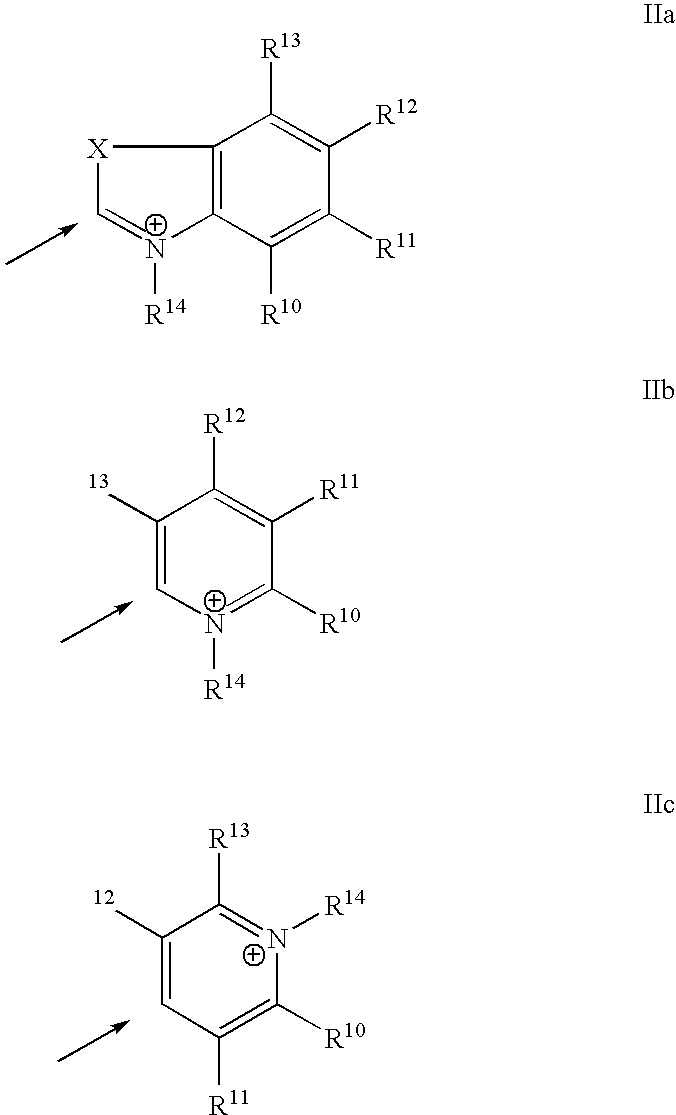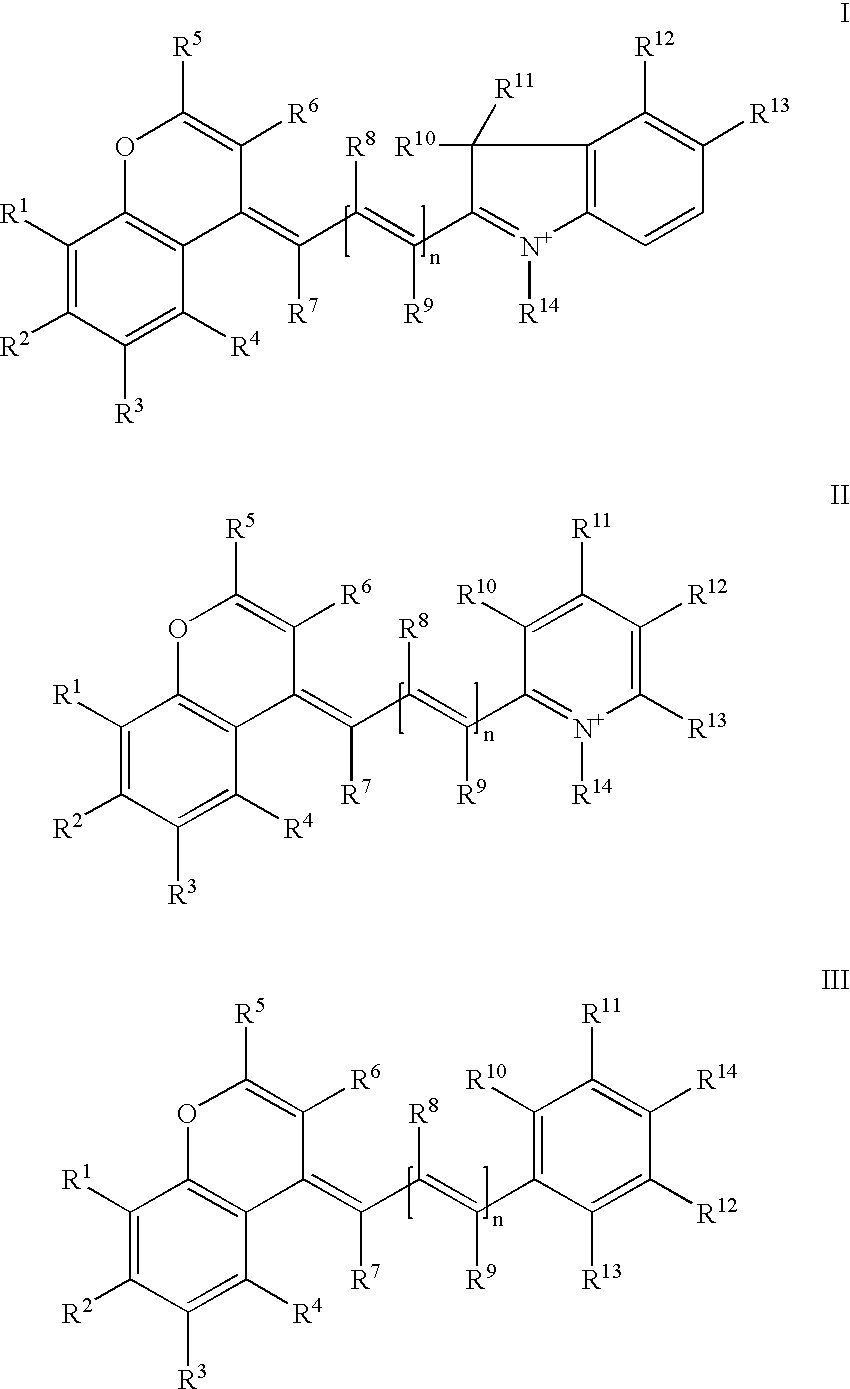Stable near-infrared (NIR) marker dyes based on benzopyrylium-polymethines
a near-infrared and marker dye technology, applied in methine/polymethine dyes, organic chemistry, instruments, etc., can solve the problems of increasing the chances of nucleophilic or electrophilic attack on the chain, destroying the -system, and limited number of polymethines used as biomarkers, etc., to achieve high fluorescent yield and high degree of photostability and stability in storag
- Summary
- Abstract
- Description
- Claims
- Application Information
AI Technical Summary
Benefits of technology
Problems solved by technology
Method used
Image
Examples
Embodiment Construction
s
1. Instruction for the Preparation of 11-(2,2-dimethylethyl)-9-methyl-1H,2H,3H,5H,6H,7H-pyrano[2,3-f]pyrido[3,2,1-ij]chinolin-12-ium tetrafluoroborate 2b (BS28), cf. FIG. 2:
50 ml of a 1.0 molar solution of methylmagnesiumbromide in dibutylether are added drop by drop to a cooled solution of 7.3 g (0.0245 mol) 11-(2,2-dimethylethyl)-1H,2H,3H,5H,6H,7H-pyrano[2,3-f]pyrido[3,2,1-ij]chinolin-9-on in 50 ml ethylenglycol-dimethylether. The mixture was heated to a temperature of 40 degrees C. for a time span of 30 minutes. After cooling down to 0 degrees C., 70 ml of a saturated NH.sub.4 Cl solution and diluted hydrochloric acid were added for hydrolysis. The organic phase was separated and extracted using 4.times.10 ml diethylether. The solvent was removed in a rotary evaporator and the oily residue was dissolved in 20 ml pure acetic acid. The addition of 3 ml HBF.sub.4 (48-50%) and the dilution with diethylether created a precipitant which is filtered out and recrystallized from pure ace...
PUM
| Property | Measurement | Unit |
|---|---|---|
| Stability | aaaaa | aaaaa |
| Fluorescence | aaaaa | aaaaa |
| Photostability | aaaaa | aaaaa |
Abstract
Description
Claims
Application Information
 Login to view more
Login to view more - R&D Engineer
- R&D Manager
- IP Professional
- Industry Leading Data Capabilities
- Powerful AI technology
- Patent DNA Extraction
Browse by: Latest US Patents, China's latest patents, Technical Efficacy Thesaurus, Application Domain, Technology Topic.
© 2024 PatSnap. All rights reserved.Legal|Privacy policy|Modern Slavery Act Transparency Statement|Sitemap



